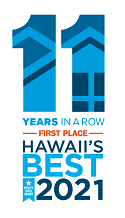
Photos by: Neal Kido
Every year, thousands of people from around the world make the migration to Hawaii to take advantage of our gentle weather, gentler personalities and perhaps most of all, our warm waters and sandy shores. But often, with the hustle and grind of daily life, our beautiful beaches are one of the first things that those who call Hawaii home, fail to take advantage of.
So the next time your boss offers to let you off early or you find yourself with a Sunday afternoon without a single car to wash or yard to rake (they call it Sunday Funday for a reason!) go “holo holo” and getaway to your favorite beach. And if you don’t already have one with your okole (butt) marks firmly imprinted in the sand, check out some of these popular spots on Oahu and Maui:

Makena Beach: When going big on Maui, there’s no better beach to visit than Makena Beach – also referred to as “Big Beach” by kamaaina (locals) or “Oneloa Beach.” As its name indicates, Makena Beach is one of the largest in South Maui stretching more than 1.5 miles long and is thought to be one of the best on the island. Located between two black-lava outcroppings, Makena Beach is protected from the trade winds while offering spectacular views of Molokini and Kahoolawe off shore.

With ample sand and surf, Makena provides the ideal backdrop for beach bums to wile the day away swimming, snorkeling, sunbathing, body surfing or stand up paddleboarding to their hearts content. Those who aren’t particularly surf savvy will want to keep their eyes on the ocean, since this beach is renowned for its sizeable shore break during summer’s south swells.

Wailea Beach: Named “America’s Best Beach” in 1999, Wailea Beach’s central location in South Maui is beloved by visitors and kamaaina alike. With its proximity to many of the area’s top hotels – including the Grand Wailea, Four Seasons and Wailea Beach Villas – beachgoers should plan to hit the sand at first light to snag the best spot on shore.
But despite the crowds that can make Wailea look more like a block party than a beach, its convenient location provides sunbathers who need a mid-day siesta, quick access to some of the area’s best shops and dining. And for those looking for a change of scenery a short stroll along the boardwalk leads to Polo Beach to the south, or Mokapu Beach to north.

Sunset Beach: Celebrated Sunset Beach on Oahu’s north shore is best known for the big waves that visit its waters each winter. Also known as Paumalu (in Hawaiian), Sunset Beach offers one of the longest sand beaches on the island of Oahu, strolling more than two miles.
In the summer months, Sunset’s waters are placid and clear – making it the perfect setting for swimming, snorkeling and collecting shells along the abundant tide pools circling the shore. Come winter however, monstrous waves reaching 20 – 30 feet high at times, bring the water to a boil with white wash and make the sand crawl with spectators. Because of these big waves and long stretches of jagged coral which lie in wait right below the water’s surface, inexperienced surfers and swimmers are encouraged to stay out of the water.

Waimea Bay: One of the better-known beaches in Hawaii, Waimea Bay has been made world-famous by the Quiksilver Big Wave Invitational in Memory of Eddie Aikau – one of the biggest big wave contests in existence today. Since its birth in 1984, the tournament has been held just seven times, since tournament rules require specific conditions, including that wave heights be a minimum of 20 feet. In other words, and as the contest slogan clearly states, “the Bay calls the day.”

Waimea Bay has played a pivotal role in the rise of big wave surfing, and its giant waves went unridden for countless years until November 1957, when a handful of surfers took the plunge and paddled out. In stark contrast, Waimea is still as a lake in the summer months, offering clear views of its sandy bottom, and making it the perfect locale for swimming, sunbathing, fishing and taking a leap of faith off the well-known “Waimea rock.”
Ala Moana Beach Park: Rippling over 100 acres a little outside of downtown Honolulu, Ala Moana Beach Park is a man-made beach, created in the 1950s when Dillingham Dredging Company dumped tons of earth on the shoreline, building a beach. Protected by an outer reef, this beach is perfect for families with young keiki who don’t want to worry about waves or rip currents, as well as open-water swimmers who want to get in some laps and paddleboarders just getting into the sport.

And (heaven-forbid) for those anti-beach-goers the park also offers ample jogging paths, grassy lawns for picnicking and barbeques as well as the world’s largest open air mall right across the street. You know, in case you forgot to bring water or sunscreen. Or a Gucci purse.
Waikiki Beach: Often synonymous with Hawaii and, well, beaches, Waikiki has been celebrated and well-visited by travelers from around the world for decades. It’s soft, gentle waves make it an ideal spot for newbies just learning to hang ten (just try to stay out of the way of stray boards). Just a quick jaunt from dozens of hotels, shops and eateries, Waikiki Beach is a great place for locals to escape from their traditional sandy spot, and contest the hordes of visitors staking out their territory with beach towels and sunscreen.
In actuality, Waikiki Beach is a string of smaller beaches, stretching over 1.5 miles and includes popular names like Kuhio Beach and San Souci, as well as lesser-known parks like Kahanamoku Beach and Gray’s Beach. Hawaiian for “Sprouting Water” in recent years, Waikiki Beach’s well-used sand has eroded, leading to a restoration project which wrapped up earlier this year, widening the current shoreline by 37 feet.

* For families with young children or those who are not strong swimmers always remember to approach the ocean with caution. Remember, if in doubt, stay out!
Congratulations, you have access to Hawaii's most comprehensive Real Estate Search! Please help us to better serve you by answering these optional questions.
Facebook Registration
This email is already registered. Click the button below and we'll send you a link to reset your password.
You have already registered using your FB account.
Check your inbox for an email from brokersmls@locationshawaii.com. It contains a link to reset your password.
The agent who gave you access to this website is no longer with Locations LLC.
Due to local MLS regulations, you will need to re-register if you would like to continue your access.
We will pre-fill the registration form with information in our files. Once you click Register you can either select a new agent or one will be assigned for you.
Sorry for the inconvenience, Locations LLC.
Schedule a Virtual Tour
Request an appointment to view this property by completing the information below. Please note your appointment is not confirmed until an agent calls you.
Disclaimer: The properties we may show you may be Locations LLC listings or listings of other brokerage firms. Professional protocol requires agent to set up an appointment with the listings agent to show a property. Locations, LLC may only show properties marked "Active" and "ACS".
Listings in
Additional Criteria
Keep your eye on this property! Save this listing and receive e-mail updates if the status of the property changes.
Share this property by completing the the form below. Your friend will receive an e-mail from you with a link to view the details of this property.
How can we help?
Send a message and we'll respond shortly.
We will not rent, share, or sell your information. Privacy Policy.










